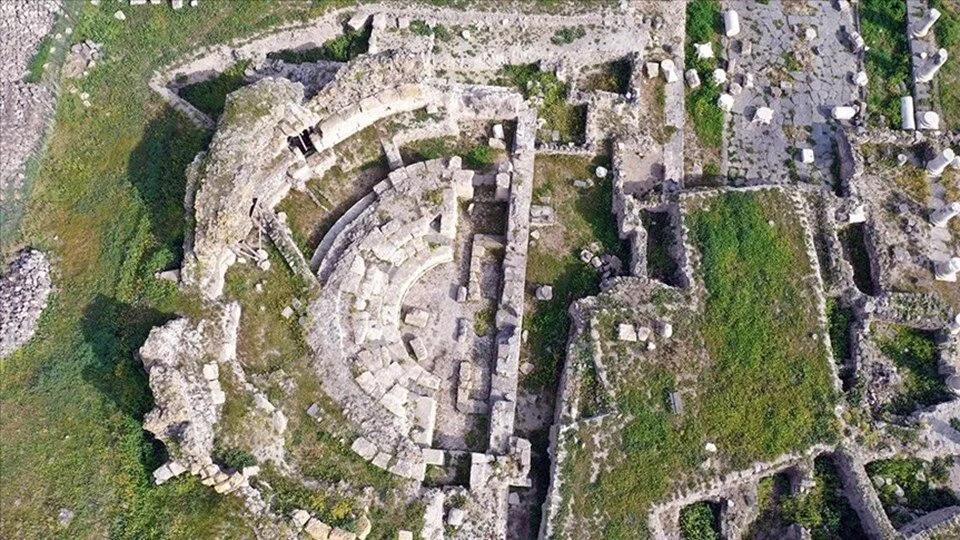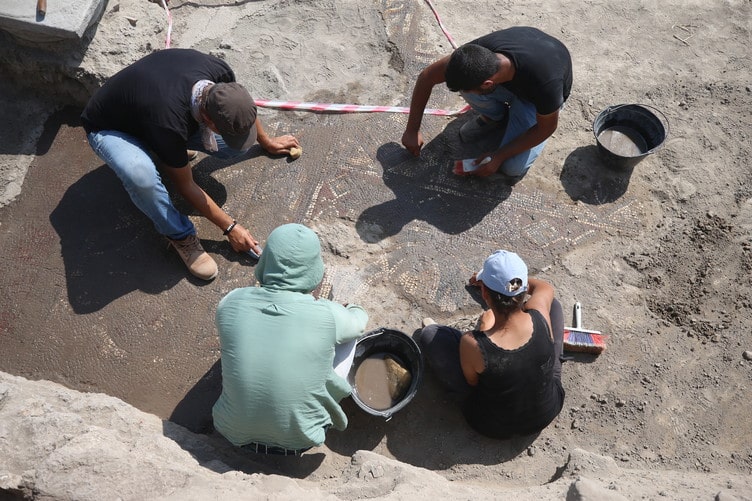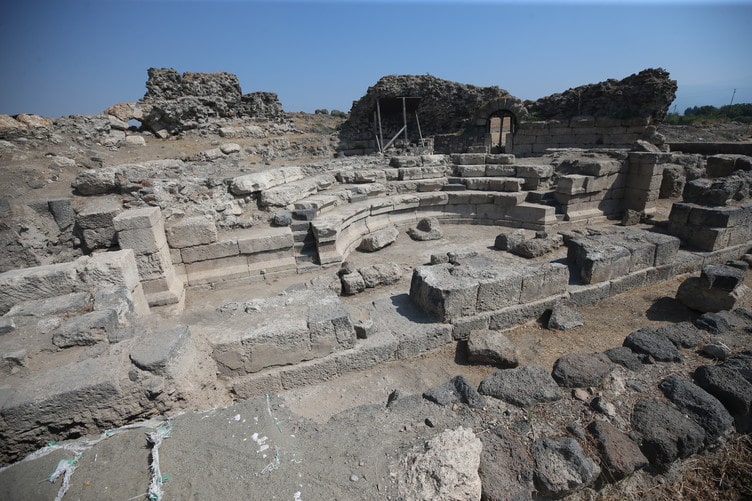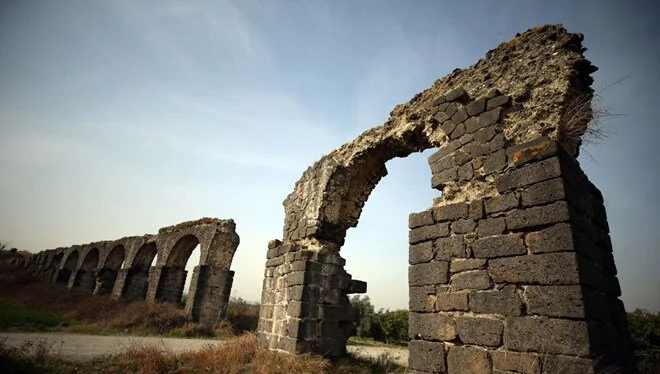
Works continues in the ancient city of Epiphaneia
A project is being carried out for the promotion and development of the ancient city of Epiphaneia, located in the Erzin district of Hatay, with traces of the first settlement dating back 6,000 years.
Epiphaneia Ancient City is also known as the Issos Ruins.
The excavations that began as a rescue excavation in Epiphaneia in 2006 are ongoing under the leadership of Hatay Archaeology Museum, with scientific guidance from Associate Professor Dr. Banu Özdilek, a faculty member of the Department of Archaeology at Hatay Mustafa Kemal University.
During the excavations, ceramics, plates, oil lamps, and coins from various periods and cultures were discovered.
Epiphaneia Ancient City will be developed for tourism.
Project planning is also underway for the development of the area containing the ‘Calendar Mosaic,’ which depicts rural activities and personifications for each month, discovered during excavations conducted last year, as well as the Roman Road and the area where the council building is located within the ancient city, to promote tourism.

Hatay Mustafa Kemal University Department of Archaeology Associate Professor Dr. Banu Özdilek stated that the ancient city, which has seen cultural diversity since prehistoric times, holds great importance in terms of human history.
Özdilek emphasized that this is a well-preserved and significant ancient city that has withstood all phases of Hatay’s history, saying, “The Issos Epiphaneia Ancient City dates back 6,000 years from its first settlement. It holds great importance in history, both in terms of prehistoric periods and as the region where Alexander the Great’s famous battle took place. Archaeological excavations have provided us with data from 27 layers up to the Ottoman period. It’s a significant ancient city that has been preserved and stands as a testament to all phases of Hatay’s history.”

Özdilek also mentioned that the structures built by Roman engineers in the ancient city have endured even through earthquakes like the one centered in Kahramanmaraş on February 6th.
Dr. Banu Özdilek mentioned that after the earthquake, they focused all their efforts on excavations, saying, “Alongside the excavations, we are carrying out restoration and preservation projects. Our first project involves the preservation of a very important Roman bath, along with the construction of a protective roof. Additionally, we plan to transform the area into an archaeopark. We have already prepared the project for this, and we aim to implement it in the coming days.”
She continued, “Another project involves the restoration of the unique Calendar Mosaic, the water area it is located in, along with the protection of the Roman Road and the council building with a protective roof. These are the two main projects we are working on. Apart from these, of course, we are conducting excavation work related to the city’s history. In this area, we are carrying out significant projects and collaborations with Mustafa Kemal University students and an international team. Especially in the aftermath of the earthquake in Hatay, we are doing our best to promote this preserved city through both scientific and community-oriented projects.”

Banu Özdilek mentioned that the excavations in the region will be transformed into presidentially approved excavations next year, allowing them to continue their work with longer-term, major projects.
She also highlighted that they have collaborated on projects related to the ancient city with organizations like TÜBİTAK (The Scientific and Technological Research Council of Turkey) and regional development agencies, saying, “This year, we prepared information panels and brochures that were not available previously to promote the city. Our goal is to introduce the city to the scientific community through our presentations and contribute to the region’s tourism and culture.”
You may also like
- A 1700-year-old statue of Pan unearthed during the excavations at Polyeuktos in İstanbul
- The granary was found in the ancient city of Sebaste, founded by the first Roman emperor Augustus
- Donalar Kale Kapı Rock Tomb or Donalar Rock Tomb
- Theater emerges as works continue in ancient city of Perinthos
- Urartian King Argishti’s bronze shield revealed the name of an unknown country
- The religious center of Lycia, the ancient city of Letoon
- Who were the Luwians?
- A new study brings a fresh perspective on the Anatolian origin of the Indo-European languages
- Perhaps the oldest thermal treatment center in the world, which has been in continuous use for 2000 years -Basilica Therma Roman Bath or King’s Daughter-
- The largest synagogue of the ancient world, located in the ancient city of Sardis, is being restored











Leave a Reply